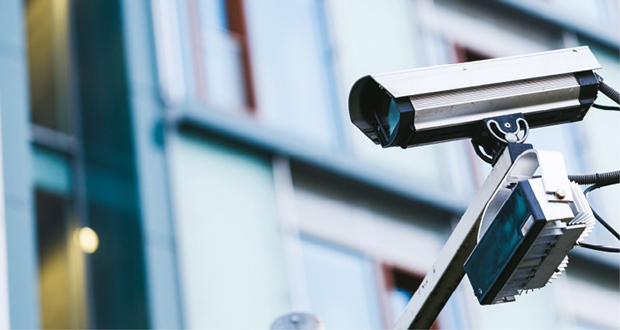 Matthew Holliday, Director of Approval Schemes at the National Security Inspectorate, explains how a range of changes to standards in surveillance monitored alarm systems are helping to improve facilities’ protection
Matthew Holliday, Director of Approval Schemes at the National Security Inspectorate, explains how a range of changes to standards in surveillance monitored alarm systems are helping to improve facilities’ protection
Technological advances are enabling increasingly cost-effective and flexible solutions to combat the daily risks faced on site, such as those posed to staffed buildings, storage facilities and power generating plants.
Protection measures for a variety of buildings rely on a progressive mix of initial deterrence against potential harm, followed by detection of any subsequent incidents and response to them – whether that is from an in-house security team, commercial keyholding/guarding provider, or the police.
Police alarm response can only be initiated following a confirmed incident involving the activation of a security system complying with national Police policy requirements covering England, Wales and Northern Ireland; similar arrangements also apply in Scotland. This includes remote signalling systems monitored by third-party approved Alarm Receiving Centres (ARCs) and Remote Video Response Centres – namely those meeting the requirements of a UKAS-accredited Certification Body, such as NSI.
Changes introduced last year to BS 8243 (covering the design, installation and configuration of intruder and hold-up alarm systems designed to generate confirmed alarm conditions) now place an equal focus on visual confirmation alongside traditional confirmation methods, which may in turn offer fewer false alarms and prove more appropriate in some situations.
FMs can now take advantage of technological advances to make use of police-compliant video surveillance systems. Their benefits include linking remote monitoring of site buildings with on-site audio announcements to verbally warn anyone present.
Conforming to recently revised standard BS 8418:2021, they also enable Remote Video Response Centre (RVRC) operators to quickly and easily check whether a detector activation is a genuine security breach and pass any verified incidents on to police for immediate manned response – in line with insurance-related requirements.
Some sites may already benefit from pre-existing security measures, including building intruder alarms. Adding a BS 8418:2021-compliant surveillance system will provide further complementary protection.
CROSS-INDUSTRY APPROACH
Allocations of police URNs to third-party monitored video surveillance systems are now expected to increase significantly following a major revision of BS 8418:2015, the Code of practice for the installation and remote monitoring of detector-activated CCTV systems.
Following the original introduction of this British Standard in 2003 and despite two subsequent revisions (in 2010 and 2015) and more recent amendments in 2017, it disappointingly did not result in an increased number of monitored systems on police response gaining compliance to BS 8418. Yet the tangible opportunities clearly remained. This led to a new cross-industry approach involving the National Police Chiefs’ Council, supported by NSI. Fresh ‘root and branch’ changes were duly adopted in the latest version of the Standard, BS 8418:2021, designed to tackle the previous limitations. These included their perceived high cost and onerous installation requirements, which had continued to limit the adoption of BS 8418 systems and RVRC services.
In this way, BS 8418 compliance will help reduce false alarms and the number of 999 emergency calls being made, both of which put pressure on police resources.
BS 8418: TWO NEW SYSTEM TYPES
Two types of monitored system now qualify for a police URN when certificated to the latest BS 8418:2021 ‘Design, installation, commissioning and maintenance of detector-activated video surveillance systems (VSS) – Code of practice’: Type A and Type A+.
Type A+, are ‘upper level’ systems, involving similar technical and installation requirements to the earlier 2015 version of the Standard. These are designed to suit insurance requirements for higher-risk commercial, industrial, military, utilities and other similar sites, and include tamper detection such as detecting the removal from mounting and additional protection for control equipment.
Type A are ‘standard’ systems. These involve the use of image transmission to an RVRC and detection techniques to screen out false alarms. Importantly however, they do not ‘water down’ requirements for lower risk sites. Rather, they must meet prescribed technical standards for operations, including detection and alarm transmission. It’s expected the simpler installation and technology requirements of Type A systems will encourage greater use of RVRC-monitoring.
ADDITIONAL AND REVISED STANDARDS
Both the ‘upper level’ Type A+ and ‘standard’ Type A BS 8418-compliant systems operated by RVRCs will need to comply with other standards including:
- BS 9518 ‘Processing of alarm signals by an alarm receiving centre – Code of practice’. Published in July 2021, it streamlines together visual, audio, sequential and personal attack alarm requirements in one document and takes over from previous RVRC operational performance requirements.
- ‘BS 8243:2010 (mentioned above) has also been revised, previous editions having suffered from similar limitations to BS 8418 in being too prescriptive. A redrafted version of BS 8243 was published in June 2021.
A 12-month transition period ends on 31st July 2022. During this period video surveillance system alarm installations can comply with either the 2015 or 2021 edition of BS 8418. To be allocated a URN a system must be installed and maintained by a company independently approved by a UKAS-accredited Certification Body, such as NSI.





